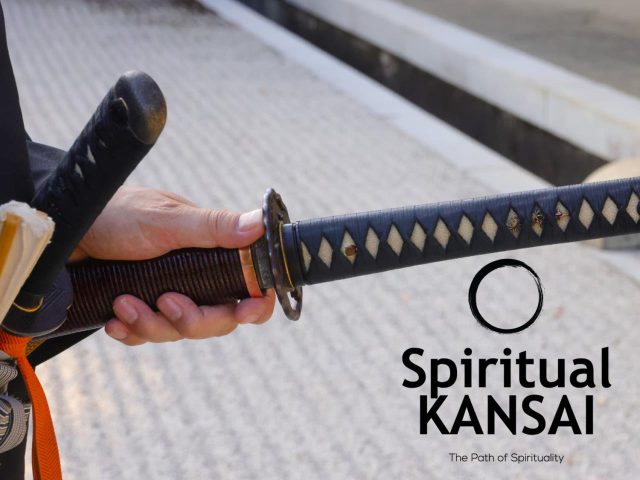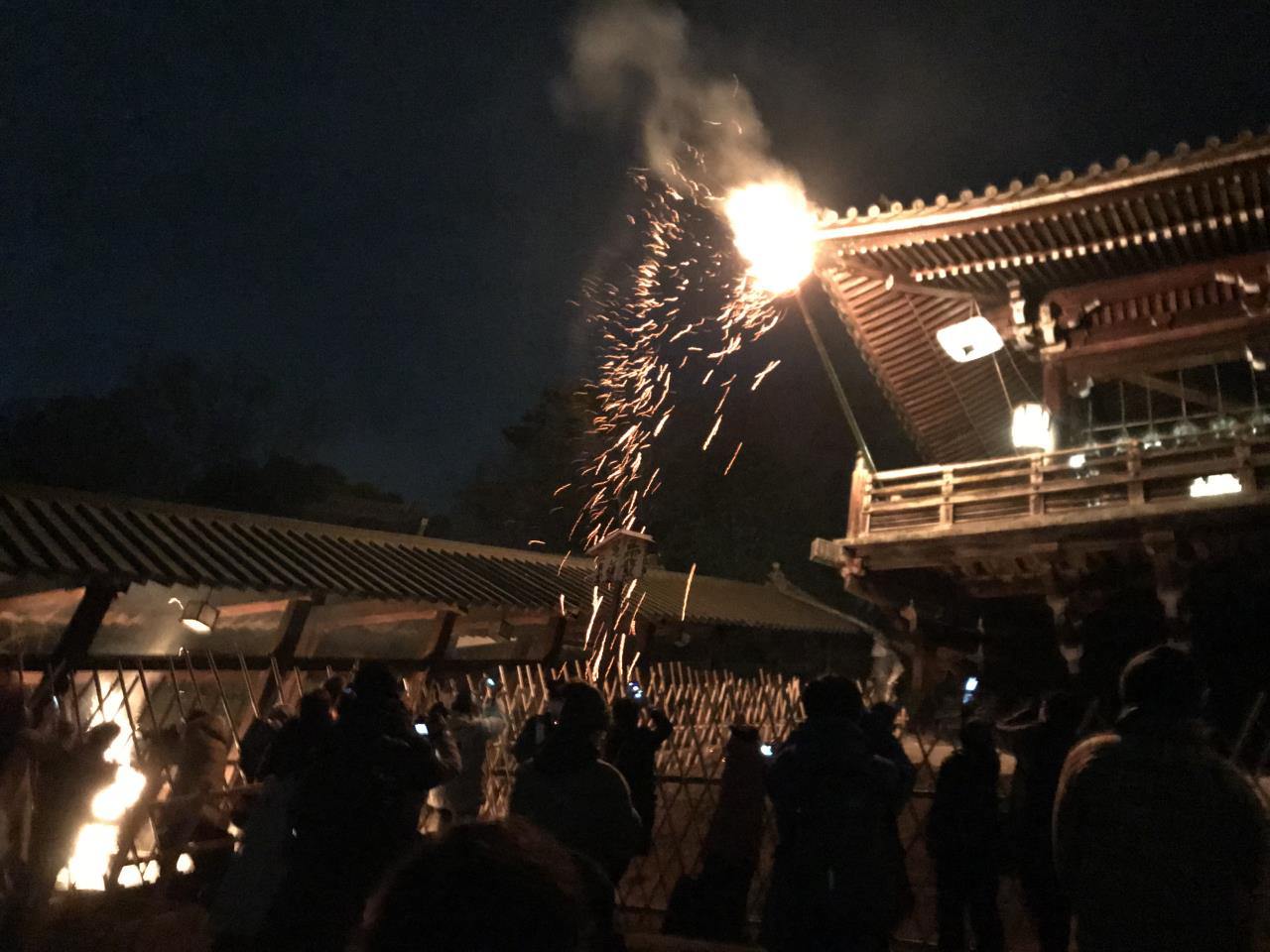
Lighting Up the Night Sky at the Ancient Shuni-e Ceremony
Last update
Todai-ji Temple in Nara is famous for its giant Buddha statue, but it is also well-known for its shuni-e ceremony, an event that takes place between March 1–14 each year. The ceremony was first held more than 1,270 years ago in 752, and has continued without interruption ever since, even despite numerous wars and storms.
Shuni-e is a Buddhist ceremony that is held at various temples in order to repent and pray for abundant harvests. At Todai-ji, a carefully selected group of eleven priests known as the rengyoshu begins preparations on February 20, before spending two weeks (March 1–14) praying at the Nigatsu-do Hall. Every night, huge numbers of worshipers visit from all over the Kansai region to see the rengyoshu enter the Nigatsu-do Hall and the huge taimatsu torches.
* Due to countermeasures against infectious diseases, numerous restrictions may be placed on areas that are open to the public. Please check in advance via Todai-ji’s website.
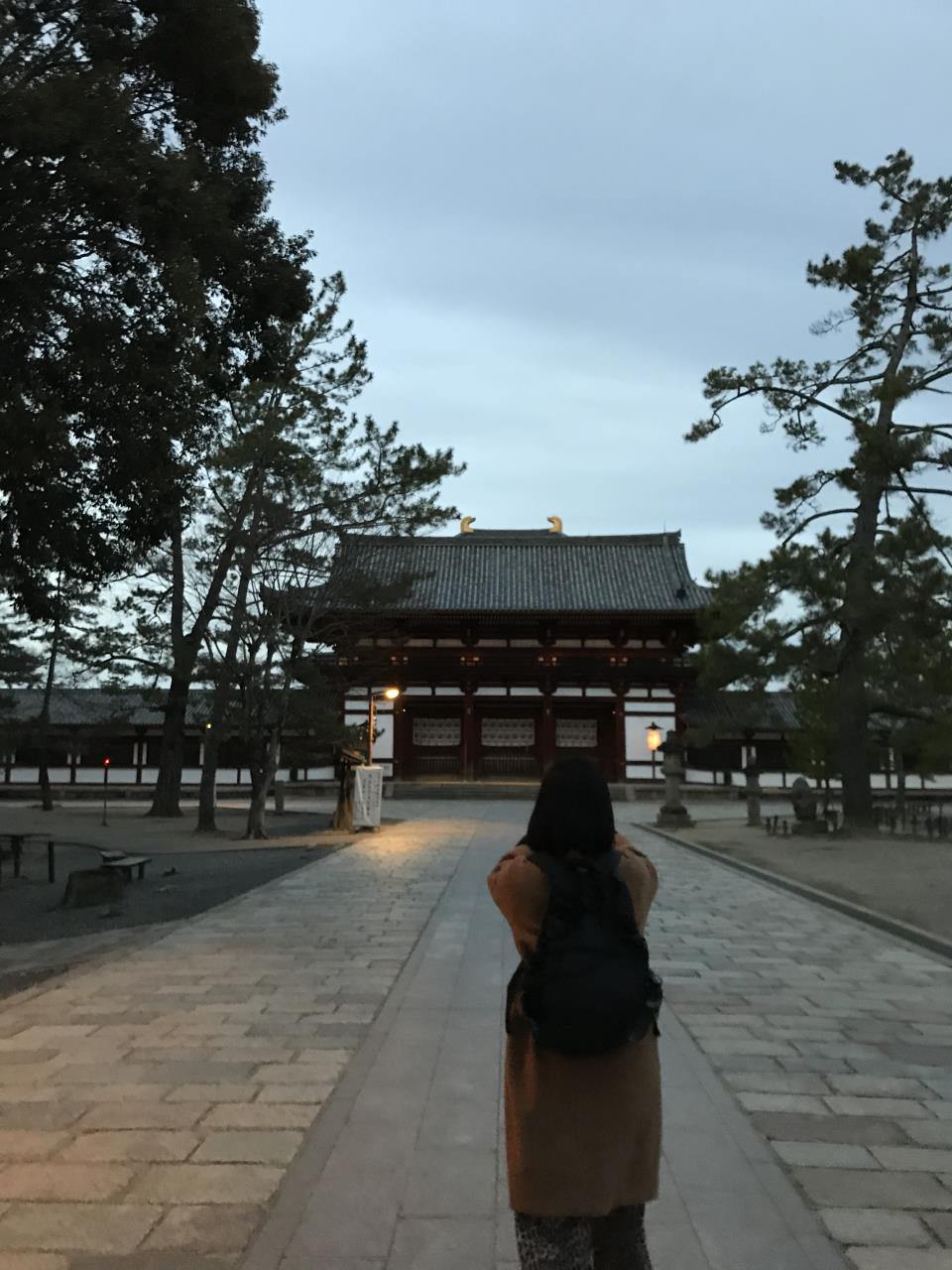
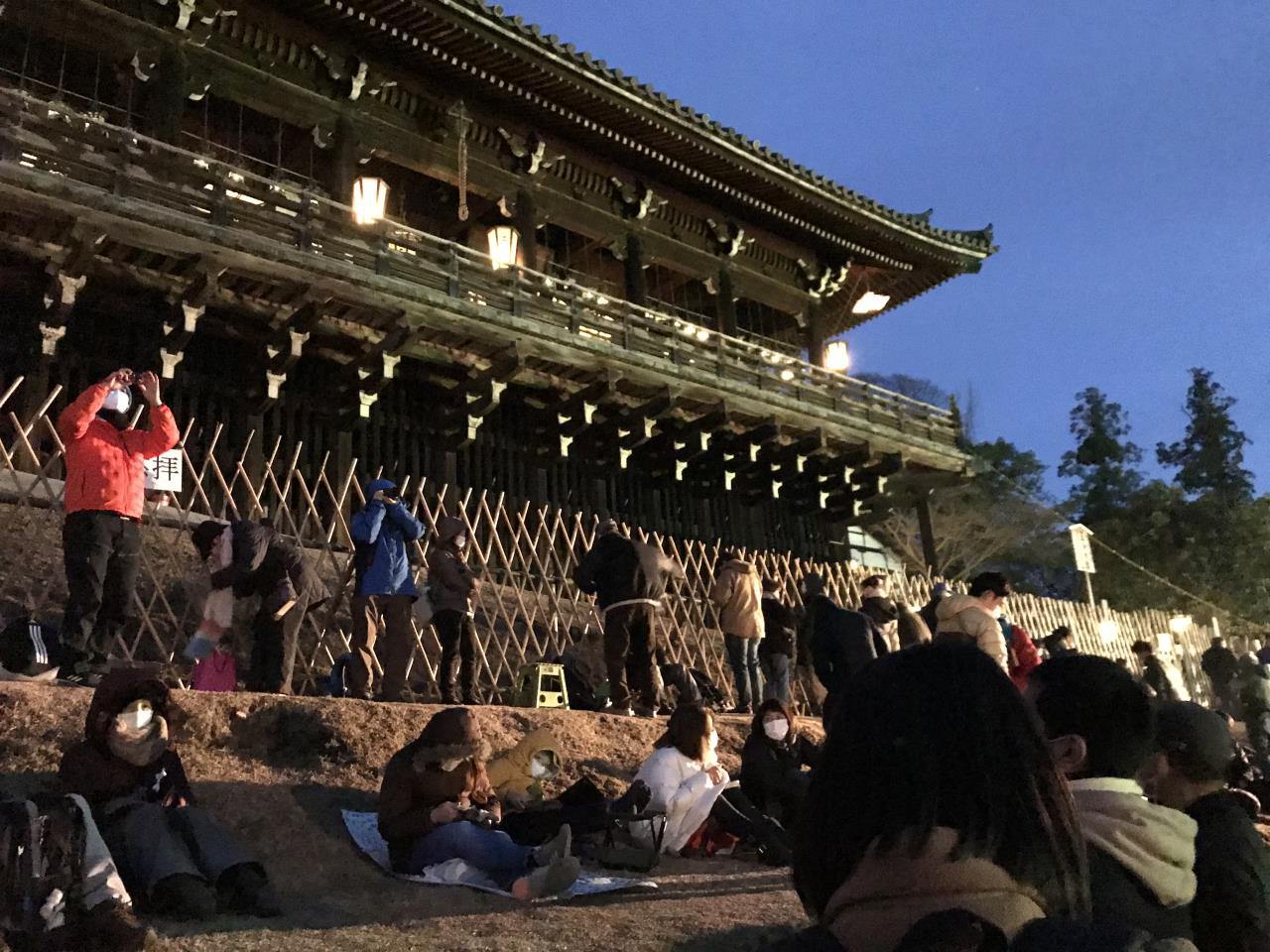
Flames from a Wooden Hall, Dancing Sparks, and Animated Worshipers
Every night at 7 pm between March 1 and 14 (7:30 pm on the 12th, 6:30 pm on the 14th), huge numbers of worshipers pack into the space beneath the stage of the Nigatsu-do Hall. Once the lights have been turned off and the hall is plunged into darkness, huge taimatsu torches light the way for the rengyoshu as they enter the hall to pray. After lighting the way, the torches jut out of the stage before being rapidly spun around, spraying sparks onto the worshipers below while moving along the platform. Under the crackling flames of the torches and the smell of smoke, worshipers wait to catch the sparks as they are thought to bring health and good luck, forgetting themselves in the excitement of the event. It takes approximately thirty minutes for the ten torches to cross the stage in order, providing all in attendance with an exhilarating, Japanese traditional and cultural experience. On March 12, the size and number (eleven) of these torches is increased, and on March 14, ten torches are lined up and spun around together at once, making for an even more intense display.
Because of the impressive taimatsu torches, and another rite which involves drawing fragrant water from a sacred well to offer to the deity Kannon, the shuni-e ceremony is also affectionately known as otaimatsu and omizutori.
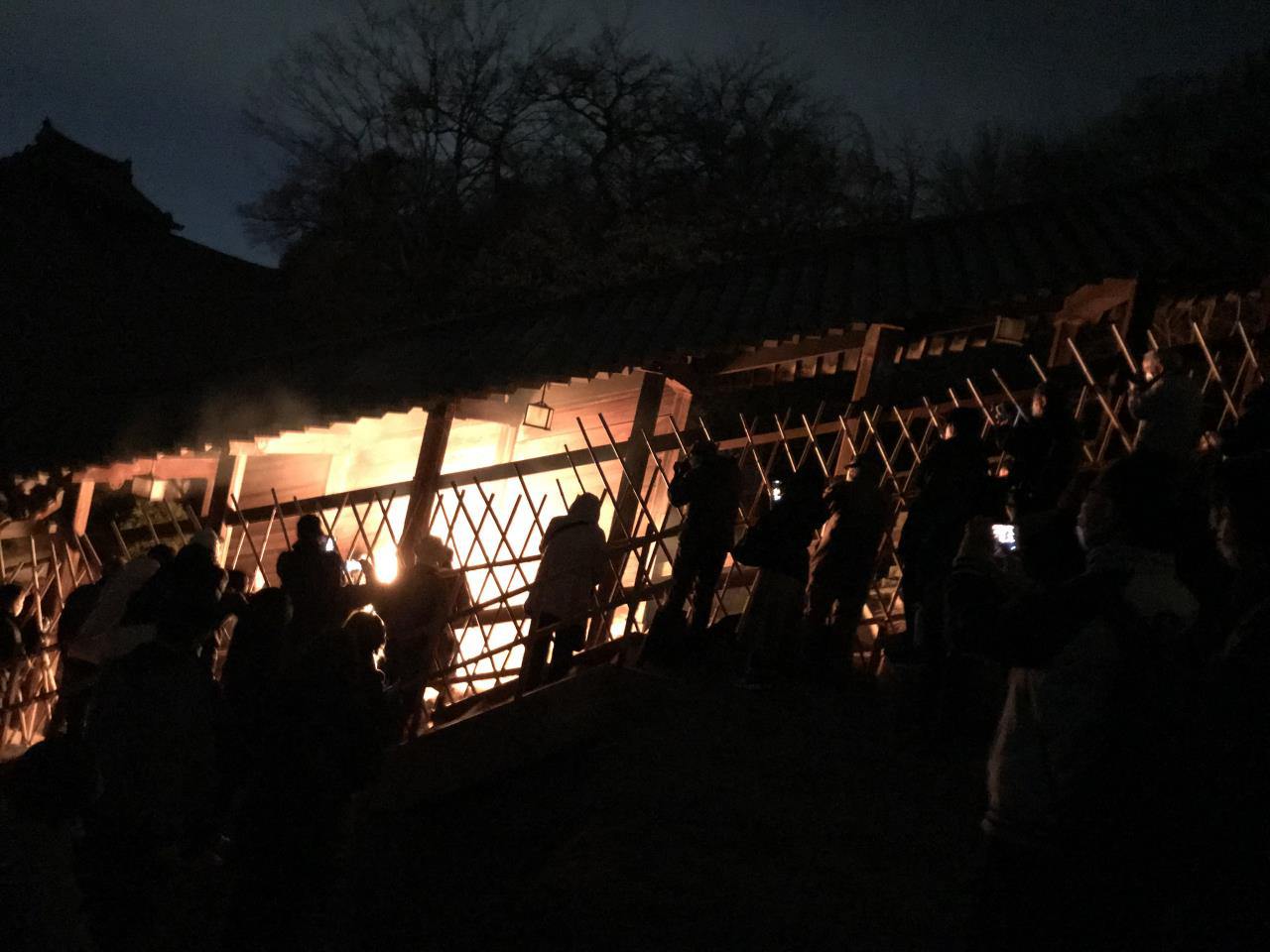

Warm up after Shuni-e with an Asuka-nabe Hotpot
After the otaimatsu ceremony, it’s dinner time. March in Japan is still cold, and so it is the perfect time to visit the Harishin (https://harishin.com/) restaurant for an Asuka-nabe hotpot (reservation required). This local hotpot dish uses milk in its soup, and is thought to have originated in China. A priest that had come to Nara from China during the Tang dynasty is said to have put goat’s milk in his hotpot to stay warm. The Tang dynasty ruled from 618 to 907, and so the Asuka-nabe hotpot comes from around the time that the shuni-e ceremony began.
Using Tour Guides to Get the Most Out of the Ceremony
Shuni-e is not simply a show or an event. With a history of 1,270 years, understanding the meaning and the essence of the ceremony will help to add to its significance. We therefore encourage you to take part in the Nara Prefectural Shuni-e Seminar and join a guided tour. Huge numbers visit the shuni-e each year, and not only is difficult to gauge where is best to view the ceremony, there are no reserved seats. Tour guides are essential to getting the most out of the shuni-e. The guides will provide you with useful advice, too, such as suggesting you turn your coat inside out to ensure the sparks don’t damage the outside!
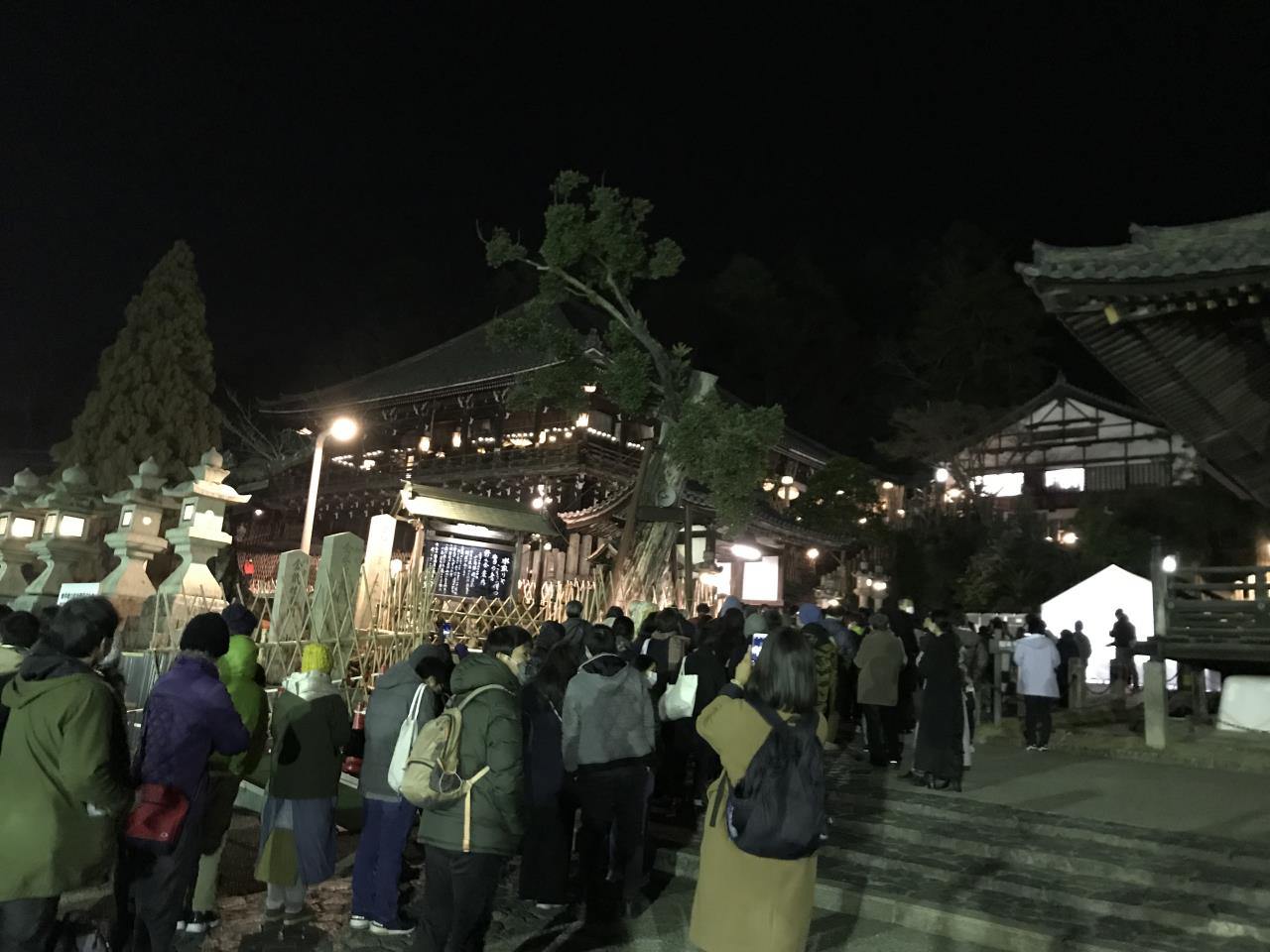
Check also...

Consider your accommodation in the Kansai area!

Restrictions on Large Baggage
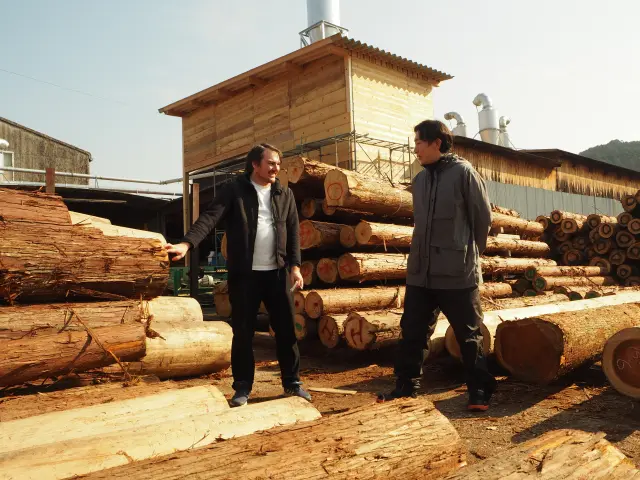
Fermentation, Forests and Waters - A Journey Into the Living Legacy of Tradition and Community in Shiga and Nara
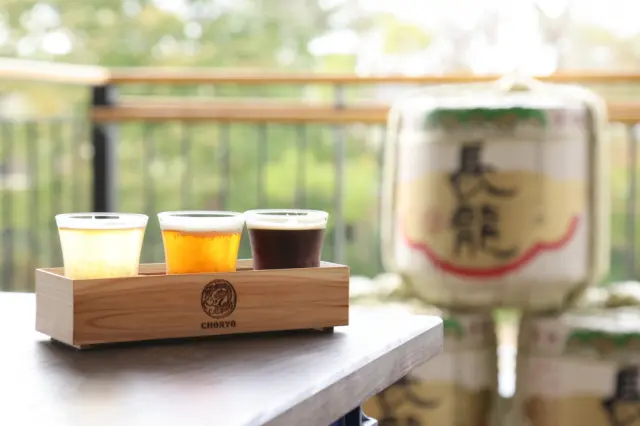
Nara: A Journey Through Its Ancient Fermentation Culture
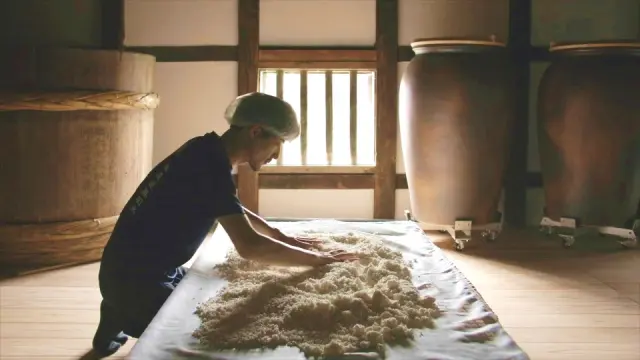
Three recommended spots related to "Nara sake" brewed in Nara, the birthplace of Japanese sake!
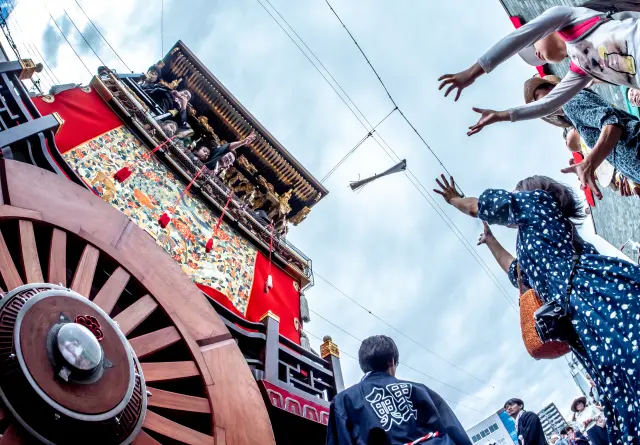
10 Traditional Performing Arts and Events in Kansai
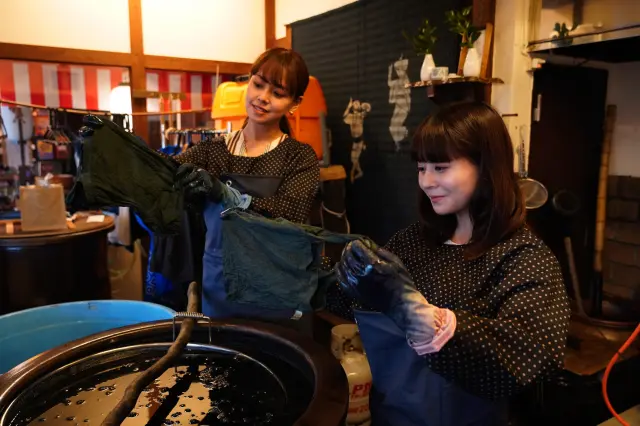
Top 10 Spots to Try Kansai's Traditional Crafts
